Servicios Personalizados
Revista
Articulo
Indicadores
-
 Citado por SciELO
Citado por SciELO -
 Accesos
Accesos
Links relacionados
-
 Similares en
SciELO
Similares en
SciELO
Compartir
Revista Ciencia, Tecnología e Innovación
versión impresa ISSN 2225-8787
Rev. Cien. Tec. In. vol.10 no.11 Chuquisaca jun. 2015
ARTÍCULO
Fractal Modeling of Foreign Exchance in Bolivia
Modelación Fractal del intercambio comercial Internacional en Bolivia
RAMOS ESCAMILLA- María ´†*, SERRUDO - Javier, ROSALES - Mauricio & ESPINOZA- Luis".
Recibido Junio, 4, 2015; Aceptado: Julio, 09, 2015
Resumen
En esta investigación se analiza el mercado de divisas que se centra en la moneda boliviana, en una dimensión fractal y considerando financieramente las tendencias y movimientos en este mercado, utilizando modelos fractales como h base de nuestro análisis, proyectamos su periodo ex posta 2014
Palabras clave
Fractales, La divisa, Moneda, Puntos de pivote, Retroceso de Fibonacci.
Abstract
In this research we analyse the Forex market focusing on the Bolivian currency, in a Fractal dimension and Financial considering the trends and movements in this market, using fractal modeling as the basis of our analysis, we project its ex post period to 2014
Keywords
Fractals, Forex, Currency, Pivot Points, Fibonacci Retracement.
Introduction
As an introduction to foreign exchange trading based on the Bolivian currency we cover the Forex market (Foreign Exchange, FX) is the largest and most liquid financial market in the world, with a daily trading that exceeds the combined daily trading in all markets stock and bond world. This allows investors around the world to buy and sell currencies through the exchange between buyers and sellers of the same
In the time to invest in foreign exchange must be borne in mind that currencies are traded in pairs, so that the first currency indicates the number of units of the second currency according to the exchange rate. Thus, one euro trading US dollars (US dollars) of 1.40 indicates that one euro is equivalent to $ 1.40, to achieve the fractal modeling, and have a greater understanding of what is the exchange of currencies and their calculation based on the Fibonacci sequence as the recurrence relation which defines it as:

The elements of this sequence are called Fibonacci numbers. This sequence is the basic element for making computations on Fibonacci Calculator.
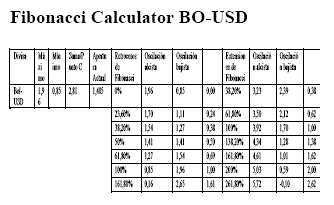
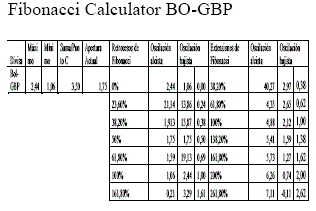
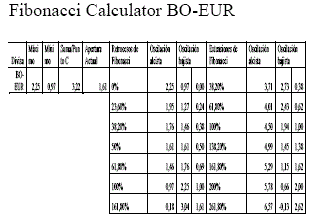
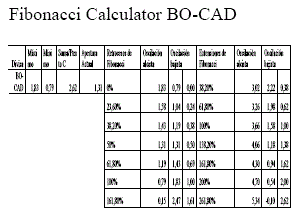
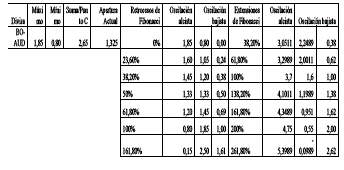
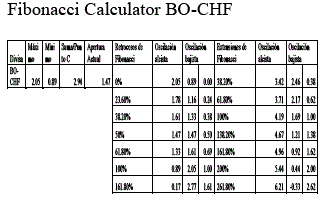
Fibonacci extensions are similarly drawn to the setbacks, these can be extended by adding additional levels corresponding to upper Fibonacci percentages: 161.8%, 261.8% or any other percentage obtained by multiplying a percentage above the golden ratio: 1.618 to EF = Fibonacci extensions, RF = Fibonacci retracements and RO = ratio of gold to the following sequences:
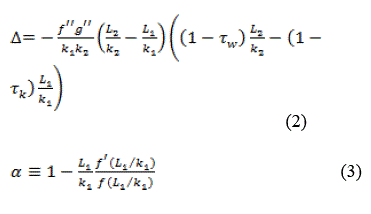
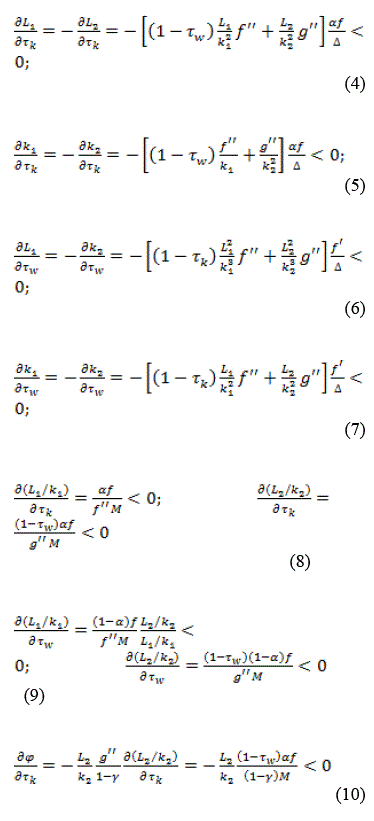

When a Fibonacci level is broken by the price, it becomes support taking the next level of Fibonacci resistance. Fibonacci extensions are used as forecast future levels of support or resistance for the market once the price exceeds the level marked by the Fibonacci retracement resistance 100%.
The theory based on Fibonacci retracements is that the market moves rhythmically and in this rate the Fibonacci sequence is present, as in theory, any phenomenon of nature (human behavior is reflected in the market and gives the "natural" character on their movements).
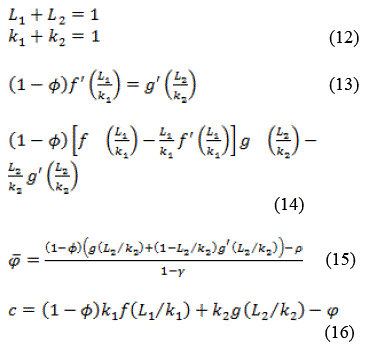

The pace of the market is defined by cycle waves. In the development of a trend we will see an impulsive wave A in which the market moves in favor of the trend.
Then a corrective wave B in which the price back up to a certain level from which it will move in favor of the trend in a new impulsive wave C. This happens in bull market conditions and bear market cycles appears CO = wave, O_A = wave A = corrective wave B impulsive O_B, O C = impulse wave C, MB = MB = market bull and bear market.
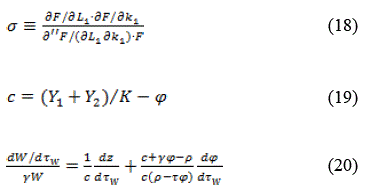
The main objective of analyzing the corrective movements with Fibonacci ratios is to relate the size of the corrective movement of wave B with a percentage of impulsive movement occurred during previous setbacks Fibonacci wave A. The levels mark this relationship by the percentages given by the Fibonacci sequence. These levels represent support or resistance areas where corrective movement end. For example, if we have a bullish trend and draw the Fibonacci retracement levels, this will be likely a support areas where end a corrective downward movement. The first support is 38.2%, if the price does not stop here and breaks this level, that level will become the new resistance and support level would happen to the next level marked by the Fibonacci sequence, 61.8% with TA = SF = uptrend Fibonacci sequence follows:


Fibonacci retracements are the most used tool of the group analysis based on the Fibonacci sequence (Fibonacci studies). They are used to predict support levels AB / AC = AC / CB = cp and market resistance A (k) = ![]() 5 / 5 ((1 +
5 / 5 ((1 + ![]() 5) / 2) k-
5) / 2) k-![]() 5 / 5 ((1 -
5 / 5 ((1 -![]() 5) / 2) k. To draw Fibonacci retracements first we identify the endpoints of a strong movement in the market and draw a vertical line whose height is equal to the height between these two points.
5) / 2) k. To draw Fibonacci retracements first we identify the endpoints of a strong movement in the market and draw a vertical line whose height is equal to the height between these two points.
The vertical line will be divided by horizontal lines separated by percentages of the Fibonacci sequence to the height of the vertical line. The most widely used percentages are 0%, 38.2%, 50%, 61.8% and 100%.
After a strong price move either upward ![]()
![]() + 1 = ^ 2 or bearish
+ 1 = ^ 2 or bearish ![]() -1 = 1 /
-1 = 1 / ![]() , the market tends to shrink. The levels at which this decline ends or stops frequently correspond to the horizontal lines of the Fibonacci retracements A (k + 1) = A (k) + J (k). Fibonacci retracements are not useful to determine the market trend but help to predict support and resistance levels for a decrease price of A (k + 2) = A (k) + A (k + 1), allowing medium traders anticipate market fluctuations and operate accordingly to RP = price lag, T = FMM = medium traders and market fluctuations
, the market tends to shrink. The levels at which this decline ends or stops frequently correspond to the horizontal lines of the Fibonacci retracements A (k + 1) = A (k) + J (k). Fibonacci retracements are not useful to determine the market trend but help to predict support and resistance levels for a decrease price of A (k + 2) = A (k) + A (k + 1), allowing medium traders anticipate market fluctuations and operate accordingly to RP = price lag, T = FMM = medium traders and market fluctuations
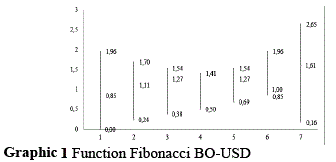
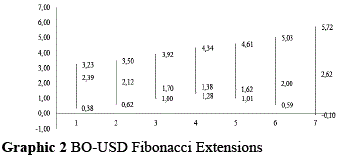
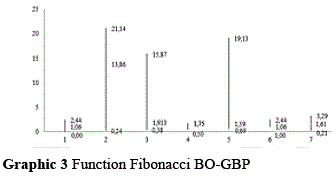
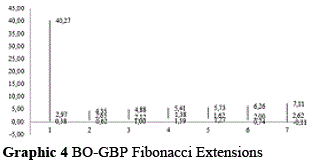
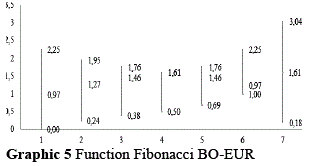
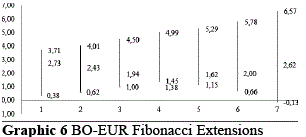
The pivot points represent price levels where the general price trend may change direction, in other words, the pivot points are used as levels of support and resistance where the price should change trend PP = points as common pivot is all transactions in financial markets revolve around capitalizing on the trend in the price of an asset.
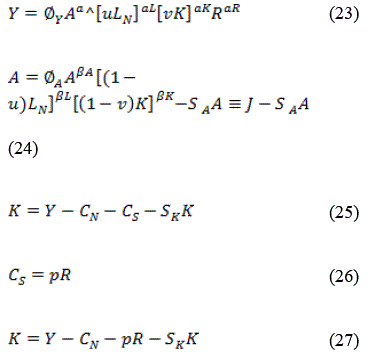

To take maximum advantage of these price movements, maximize profits and reduce losses always want to find the beginning of these trends. The point pivots, by definition, mark levels change / trend continued and thus can greatly help in this task. However, calculating pivot points is not an exact science and several methods exist for it. For example Camarilla equation MP = price movements, NC = levels change, CT = continuing trend and EC = equation Camarilla of the following sequence:
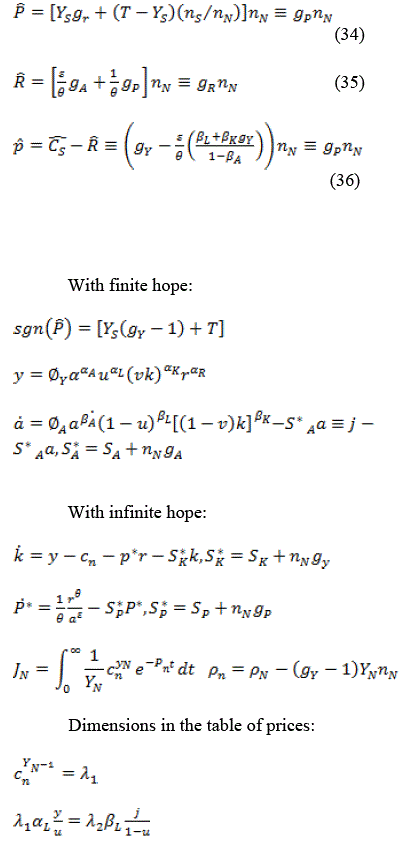
The most common and simple formula to calculate the pivot points, is as follows (can be applied to any timeframe although it is more common in daily charts). A central pivot point and various levels of support and resistance around are calculated:
Pivot Point = (Maximum (previous) + Low (previous) + Close (previous)) / 3
Resistor 1 (R1) = (2 x Pivot Point) - Low (previous)
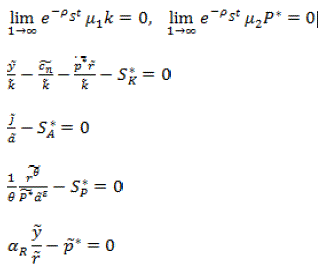
Support 1 (S1) = (2 x Pivot Point) - High (previous)
Resistance 2 (R2) = (Pivot Point -Support 1) Resistor 1
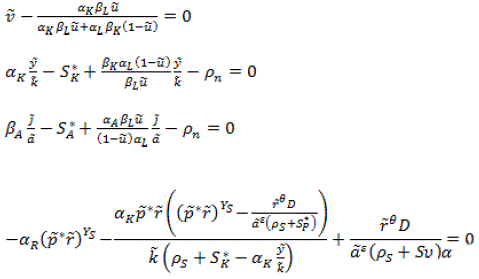
Support 2 (S2) = Pivot Point - (Resistance 1 - Support 1)
One of the most common ways to find support and resistance are the pivot points. These points represent support or resistance levels where the price is expected to react. In this article we first calculate the pivot points and then move on to describe how they are interpreted and used as a tool for trading tool TT = trading tool Calculating the pivot points
There are several ways to calculate the pivot points being common in all of them the use of high, low and close of the candle the day before. I said day, so the results are the daily pivot points, however you can use other time frames, for example weekly, giving the weekly pivot points. The daily pivot points are the most widely used reason why they will be the focus of the article to CV = close of the candle as shown below:
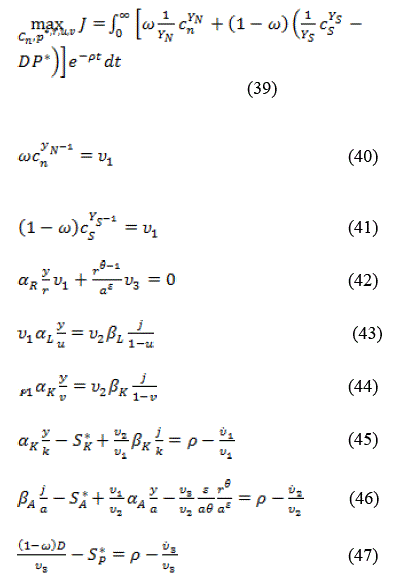
The original and most common way to calculate pivot points is done with the following formula H = Maximum yesterday and L = low of the previous day C = end of the previous day and PP = pivot point for all R1 / R2 = resistance 1 / resistance 2, S1 / S2 = support 1 / support 2, is important to note that in a 24 hour continuous market. Another common way of calculating pivot points is introducing today's opening price in the calculation of P level:
Where:
O = opening price today, the other levels are calculated using the same formula described above but using the modified O. P level
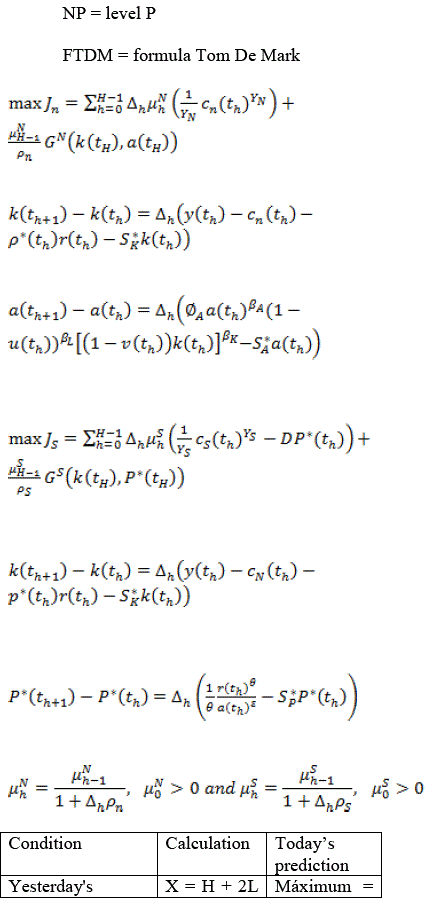
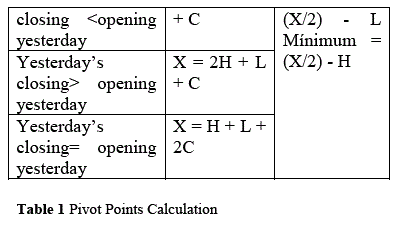
Other styles are known calculation and Woodie clique in CLL = clique and WOO = Woodie.
Interpretation and use of Pivot Points
Once you have calculated the pivot points we can put them on the chart, if we calculate the pivot points with daily data we can use lower time frames to see better and react the price at these levels, the pivot point itself (P) represents the media / primary resistance. This means that expect significant price movements of trading marked by this level. The rest of media and calculated resistance, even with less importance than the pivot point, itself can also generate more than interesting movements around them.
The pivot points can be used for two purposes: to identify the prevailing trend in the market and as points of entry and exit from the market with P = support / resistance primary, TPM = predominant trend in the market, PE = entry points and SM = exit from the market:
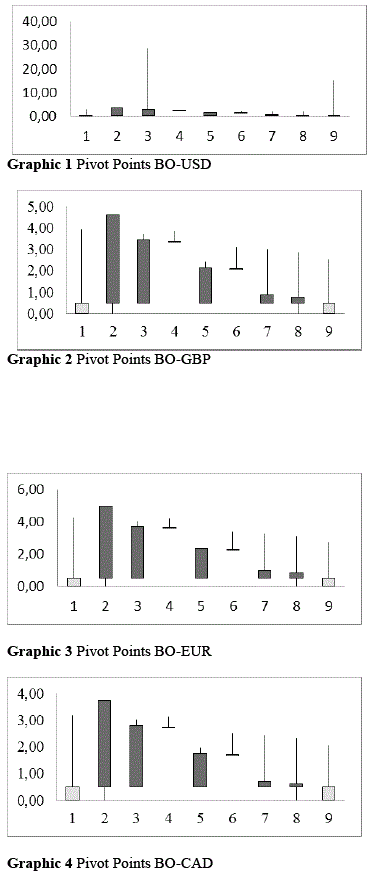
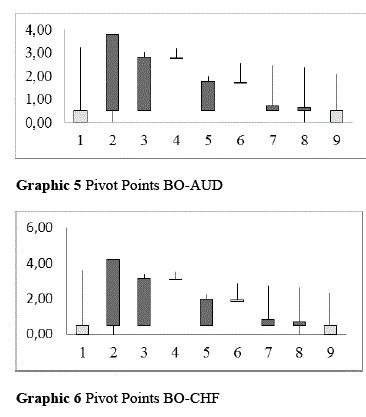
With this identification of pivot points trend: If the price set by the pivot point is broken in an upward movement, the market is bullish and, conversely, if the pivot point is broken in a downward motion, the market is bearish MA = upward movement, MAL = bull market, downward movement and MD = MB = bear market.
In general, if the price stays about the pivot point we can say that the market is bullish and vice versa. However, note that the pivot points are indicators of short-term trend, useful during the day in which they are calculated and in the end of the day need to be recalculated, the points of entry and exit from the market: Pivots points can provide points of entry and exit from the market quite useful as part of a trading strategy. For example, a limit order to sell (see types of orders) can be placed on a support level to open if this support is broken and can put the stop loss for this order in one of the OVL = sell limit order resistors and STS = stop loss at:
![]()
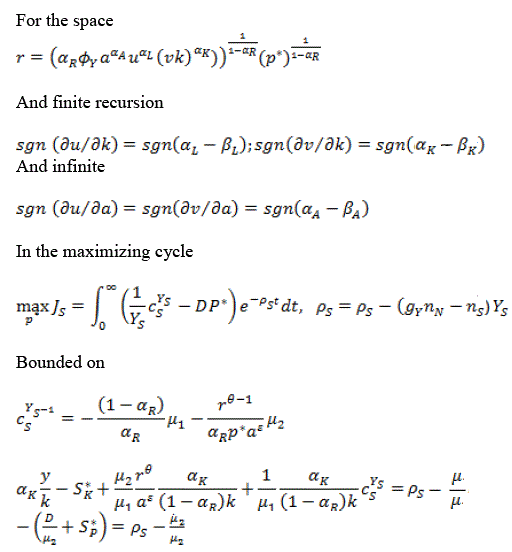
The pivot points are another tool in the arsenal with which any trader account. The successful use of the pivot points, as with any trading tool, will be on the trader's ability to work with them in conjunction with other technical analysis tools as indicators, candlestick patterns or any other style of trading.
Conclusions
The oscillations can be characterized as the market turning points, which are displayed during multiple price changes that occur to place in almost all currency pairs, the market rarely makes a clean movement in one direction. Most of the downward trends are characterized by oscillations at low and deep upward swings.
Or the markets may exhibit oscillations upward trends downward as the market turns higher in the direction of the trend, although these swings to the downside will be progressively higher prices, the fluctuations can be better characterized as "turning points" in the market that are displayed during multiple price changes that take place in almost all currency pairs. For traders who are looking operate oscillations, or traders who are seeking to deepen the identification of market fluctuations, the Fractal indicator can be of great help.
Notas
´Universidad Tecnológica del Suroeste de Guanajuato. Universidad Iberoamericana. Distinguished Academic FICSAC. ´´Universidad Mayor, Real Pontífice San Francisco Xavier de Chuquisaca, Facultad de Ciencias Económicas y Administrativas, Unidad de producción científica y tecnológica.
*Corresponde al Autor (ramos@utsoe.edu.mx)
Citación: Ramos Escamilla M., Serrudo J., Rosales M. & Espinoza L. Fractal modeling of foreign Exchance in Bolivia. Revista Ciencia, Tecnología e Innovación 2015, 10-11: 611-622.
References
AGUILAR MARQUEZ, María Angélica. Estimación del Tipo de Cambio Real de Equilibrio Para Bolivia. Revista de Análisis [online]. 2003, vol.6, n.1 [citado 2014-05-17], pp. . 41-71 . Disponible en: < http://www.revistasbolivianas.org.bo/scielo.php?script=sci_arttext&pid=S2304-88752003000100003&lng=es&nrm=iso>. ISSN 2304-8875. [ Links ]
Atanassov, K. T. n-Pulsated Fibonacci sequence [ Links ]
Beatriz Muriel, H., & Mayorga, J. (2012). Exportaciones y Empleo en Bolivia*. [ Links ]
CUPE C., Ernesto. UNA NUEVA MEDIDA DE INFLACIÓN PERCIBIDA: METODOLOGÍA Y APLICACIÓN A LA ECONOMÍA BOLIVIANA. Investig@ UMSA [online]. 2011, vol.2, n.2 [citado 2014-05-17], pp. 11-26 . Disponible en: <http://www.revistasbolivianas.org.bo/scielo.php?script=sci_arttext&pid=S2220-71392011000100002&lng=es&nrm=iso>. ISSN 2220-7139. [ Links ]
Del Carpio Gallegos, J. (2014). LAS REDES NEURONALES ARTIFICIALES EN LAS FINANZAS. Industrial Data, 8(2), 028-032. [ Links ]
Del Rıo Rivera, M. A., & Kuscevic, C. M. M. (2014). Desdolarización financiera en Bolivia. Estudios Económicos, 29(1), 3-25. [ Links ]
Duarte Duarte, J. B., Ramírez León, Z. Y., & Sierra Suárez, K. J. (2014). ESTUDIO DEL EFECTO TAMAÑO EN LOS PRINCIPALES MERCADOS BURSÁTILES DE LATINOAMÉRICA. Revista Internacional Administración & Finanzas (RIAF), 7(5). Gaviria-Arango, E. (2014). Sala de dinero (Doctoral dissertation, Escuela de Ingenieria de Antioquia). [ Links ]
Hellal, O. A., & Meyer, G. (2014). Un algoritmo de suavizado de ondas y sus aplicaciones a los mercados financieros. Aestimatio: The IEB InternationalJournal ofFinance, (8), 114-131. [ Links ]
LAGUNA VARGAS, Marco Antonio. CARACTERISTICAS DE LA INFLACION IMPORTADA EN BOLIVIA: ¿PUEDE CONTENERSE CON POLITICA CAMBIARA?. Revista de Análisis [online]. 2009, vol.11, n. 1 [citado 2014-05-17], pp. 77-109 . Disponible en: <http://www.revistasbolivianas.org.bo/scielo.php?script=sci_arttext&pid=S2304-88752009000100004&lng=es&nrm=iso>. ISSN 2304-8875. [ Links ]
LOZA TELLERIA, Gabriel. Política Cambiara y crisis internacional: el rodeo innecesario. Revista de Análisis [online]. 2010, vol.12, n. 1 [citado 2014-05-17], pp. 9-33 . Disponible en: <http://www.revistasbolivianas.org.bo/scielo.php?script=sci_arttext&pid=S2304-88752010000100002&lng=es&nrm=iso>. ISSN 2304-8875. [ Links ]
LUNA ACEVEDO, Boris A.. La apreciación del tipo de cambio y su efecto en la balanza comercial. Caso boliviano (2006-2008). Revista de Análisis [online]. 2011, vol.15,n.1 [citado 2014-05-17], pp. 45-96. Disponible en: <http://www.revistasbolivianas.org.bo/scielo.php?script=sci_arttext&pid=S2304-88752011000200003&lng=es&nrm=iso>. ISSN 2304-8875. [ Links ]
Oliver Muncharaz, J. (2014). MODELIZACIÓN DE LA VOLATILIDAD CONDICIONAL EN ÍNDICES BURSÁTILES: COMPARATIVA MODELO EGARCH VERSUS RED NEURONAL BACKPROPAGATION. [ Links ]
Paul R.. Krugman, Obstfeld, M., & Marc J.. Melitz. (2012). Economía international: Teoría y política.Pearson. [ Links ]
Prasad, B. (2014). Coding theory on (h (x), g (y))-extension of Fibonacci p-numbers polynomials. [ Links ]
Ramos-Escamilla María, M. Tavera, J. Quintanilla, G. Chaparro, F. Iglesias. (eds.) (2014). Desarrollo sustentable y finanzas. Edit. Universidad de San Francisco Xavier, UPIICSA, Universidad Tecnológica del Suroeste de Guanajuato, Universidad Central. ISBN: 978-254-6876-34-9., Bolivia-Colombia. [ Links ]
Ramos-Escamilla María, W. Lopez, A. Galicia, J. Serrano, (eds.) (2014) .Crecimuiento Financiero y Economía. Edit. Universidad de San Francisco Xavier, Universidad de Puerto Rico en Huamaco -Instituto Politécnico Nacional. ISBN: 978-254-3294-75-7., Bolivia- Puerto Rico. [ Links ]
Ramos-Escamilla María, J. Vargas, M. Rosales, (eds.) (2014). Gestión de Organizaciones. Edit. Universidad de San Francisco Xavier, Universidad de Guadalajara. ISBN: 978-176-5490-87-9., Bolivia. [ Links ]
Ramos-Escamilla María, F.I.Suarez,J.S.Ramirez, C.Salazar (2014). Fractal Systems of shares prices on the stock of Madrid. Serie. Universidad de San Francisco Xavier- Universidad Autonoma del Estado de Mexico. ISBN: 978-180-9762-01-6,Bolivia. [ Links ]
Ramos-Escamilla María, C.B. Escalona, R.P. Ramírez (2014). Neoliberalism and globalization. Universidad Estatal de la Península de Santa Elena. ISBN: 978-607-04-3417-4,Ecuador. [ Links ]
Ugarteche, O. (2013). La Unidad Monetaria Sudamericana (UMS): una segunda aproximación. Coyuntura: Análisis Económico y Social de Actualidad, (18), 7-10. www.efxto.com/articulos_forex/213 3_pivot_ [ Links ]














